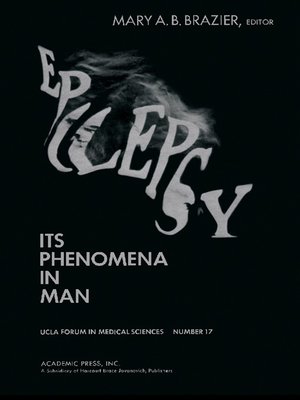
Sign up to save your library
With an OverDrive account, you can save your favorite libraries for at-a-glance information about availability. Find out more about OverDrive accounts.
Find this title in Libby, the library reading app by OverDrive.



Search for a digital library with this title
Title found at these libraries:
| Loading... |
Epilepsy: Its Phenomena in Man is a 16-chapter text that covers the wide field of the phenomena of epilepsy in man. This book emerged from the manuscripts presented by the scientific program of an alumni reunion of the Brain Research Institute of the University of California, Los Angeles. The introductory chapters review the role of electricity in the exploration and elucidation of the epileptic seizure, as well as the role of synaptic organization of the cerebral cortex in epilepsy. The succeeding chapters deal with the neuroglial impairment hypothesis, the particular forms of experimental epilepsy in man, and their corresponding surgical treatment. These topics are followed by discussions of the problem of synchronization in the spread of epileptic discharges leading to seizures and the behavioral correlations of generalized spike-wave discharge in the electroencephalogram. Other chapters explore the common anatomy of psychomotor epilepsy and schizophrenia; time of occurrence of seizures; the clinical ictal patterns and electrographic data in partial seizure cases; and the problems of analysis and interpretation of electrocerebral signals in human epilepsy. The concluding chapters consider the developments in direct recordings from epileptogenic regions in the surgical treatment of partial epilepsies. These chapters also examine the golgi survey concerning hippocampal pathology in temporal lobe epilepsy and the structural substrates of seizure foci. This book will prove useful to neuroscientists and the workers in biomedical fields critical for the understanding of epileptogenesis.






